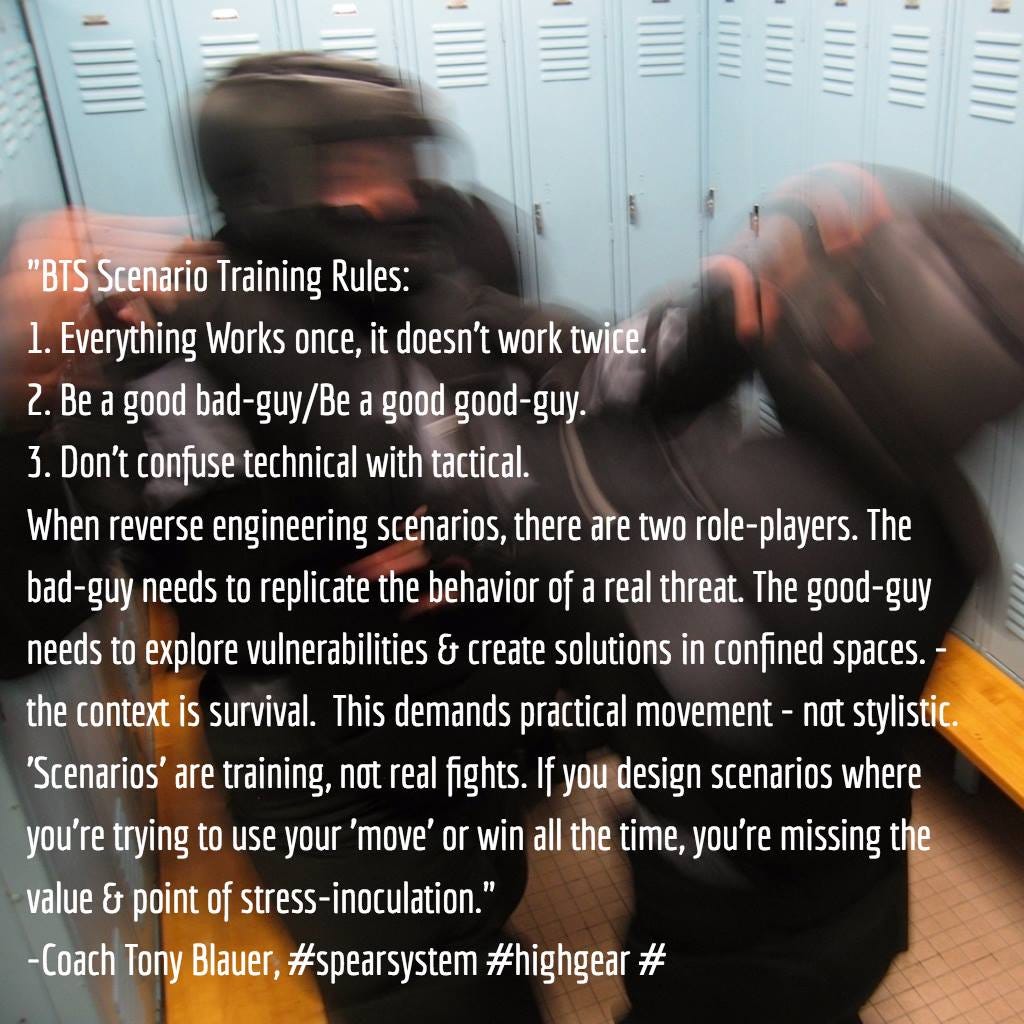SDN has moved again!
Subscribe to our RUMBLE channel
In Part One of our scenario training series, I shared three key ideas to make your training more effective.
First, we discussed the importance of not focusing on winning the scenario but rather on creating a valuable experience.
[This included the concept of deliberately being off-balance, which is counterintuitive for martial artists but crucial in real violent encounters where emotional, psychological, and physical balance is often disrupted.]
Next, I highlighted the significance of analyzing scenarios and understanding the rules of role-play, including the unconventional idea of not practicing pulling punches but practicing missing.
[This approach is essential when not using padded equipment, ensuring a safe yet realistic training environment.]
Today, I want to share 3 RULES that can further enhance your self-defense scenario training.
Training Rule One: “Everything works once; it doesn’t work twice.”
As tactical athletes, we “want to win”. That mindset can unconsciously undermine a good drill. Set aside ego and focus on the role, whether as the aggressor or defender, to explore limitations and theories in training.
Training Rule Two: ”Be a good bad-guy / Be a good good-guy.”
Reminds us that both the aggressor and defender have crucial roles, and maintaining a balanced reaction is key to effective scenario training. Scenario training is not sparring.
Training Rule Three: “Don’t confuse technical with tactical.”
Cautions against confusing technical precision with tactical effectiveness, stressing the importance of spontaneous, real-world responses. When it’s time to move, move. Don’t worry about your technique. [This doesn’t mean we’re sloppy when we practice.]
Recognize that violence loves speed and violence doesn’t care what martial art we practice. When intensity is needed, technique will be compromised.

BONUS SECTION
TRAINING CAN’T JUST BE PHYSICAL. IT MUST ADDRESS AND NURTURE THE PSYCHOLOGICAL FOR IT TO BE RELIABLE.
VIOLENCE = DANGER & RISK.
If we eliminate risk during training, we reduce fear and this creates overconfidence.
This is precisely why I spent 5 years designing and developing a training suit with an impact-reduction design.
During scenario training, we want to intelligently inject risk during contact drills!
We want contact scenario drills to inject fear. That’s how we stress inoculate which turns into confidence!
Test theories by practicing force-on-force drills with realistic ‘impact.’
We hope this article makes you think and enhances your safety and training effectiveness.
-Coach B
=====
Become a Survival Dispatch Insider …
We bring together survival enthusiasts and preppers to share skills and knowledge, so you can enhance your preparedness for emergencies and ensure the safety of you and your community.
The Results You’ll Get …
Our community, courses, and memberships are pretty special. We focus on the ways it will make a huge difference in your life.
Here are a few of the things you’ll be able to do as a member of Survival Dispatch Insider …
1) Improve your emergency preparedness by learning survival skills and strategies from experienced preppers.
2) Build lasting connections with like-minded individuals that share your passion for safety and readiness.
3) Access a wealth of knowledge and resources to assist in protecting you and your community during unexpected situations.
Click HERE to get started.
=====
